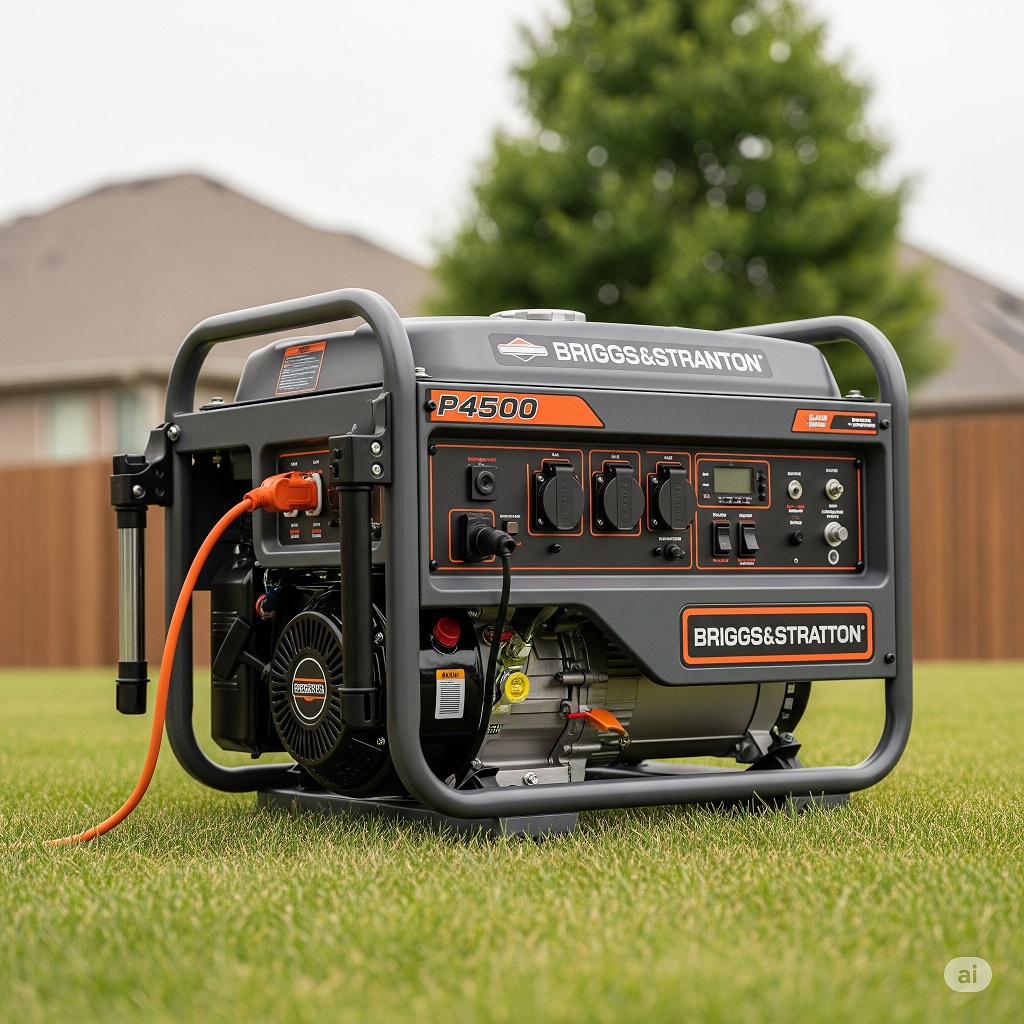
Briggs and Stratton generators are trusted for reliable home and commercial backup power. However, like any sophisticated machinery, they feature fault detection systems that monitor performance and issue codes or LED blink patterns to alert users when something is wrong. Understanding these fault codes and knowing how to fix the underlying issues can save time, reduce downtime, and prevent costly damage.
This extensive guide covers the most common Briggs and Stratton generator fault codes, their meanings, typical causes, and practical fixes. It draws on the latest 2025 information from official sources and expert troubleshooting experience.
Overview of Briggs and Stratton Generator Fault Detection System
Briggs and Stratton generators use a fault detection system (FDS) that can identify various operational problems such as low oil pressure, overspeed, low battery voltage, or frequency issues. Each fault is either displayed digitally or communicated via LED indicator flashes on the generator control panel.
- The LED blinks a specific number of times to indicate fault codes (e.g., 4 blinks for a failure to start).
- Digital displays may show fault codes on newer models.
- The generator will usually attempt automatic restart sequences but stops if a fault persists.
Common Briggs and Stratton Generator Fault Codes, Meanings & Fixes
1. No Start or Engine Will Not Run
- Fault Code: FC_4 (4 LED blinks)
- Meaning: Engine fails to start despite repeated attempts.
- Causes:
- No fuel supply or fuel valves closed.
- Failed spark plug or ignition system.
- Clogged or dirty air filter restricting air supply.
- Fixes:
- Check all fuel shutoff valves; open fully.
- Inspect spark plug condition; clean or replace as needed.
- Replace or clean air filter.
- If problem persists, contact authorized dealer or technician.
2. Low Frequency Shutdown
- Fault Code: FC_5 (5 LED blinks)
- Meaning: Generator running at less than 55 Hz for 3+ seconds and shuts down to protect connected devices.
- Causes:
- Faulty engine governor causing inconsistent engine speed.
- Generator overloaded beyond capacity.
- Mechanical issue causing engine to run slow.
- Fixes:
- Reduce load on generator.
- Inspect, repair, or replace governor system.
- Consult technician for mechanical engine diagnostics.
3. Engine Overspeed Shutdown
- Fault Code: FC_6 (6 LED blinks)
- Meaning: Engine speed exceeds preset maximum limit causing shutdown.
- Causes:
- Failed engine governor allowing engine to rev too high.
- Mechanical fault causing runaway acceleration.
- Fixes:
- Repair or replace engine governor.
- Ensure throttle and load controls operate correctly.
- Seek service assistance for mechanical faults.
4. High Oil Temperature Shutdown
- Fault Code: FC_7 (7 LED blinks)
- Meaning: Engine oil temperature exceeds approximately 148.9°C (300°F), triggering shutdown for protection.
- Causes:
- Running generator with access panels removed causing poor cooling airflow.
- Obstructed air inlet or exhaust port blocking ventilation.
- Low engine oil levels.
- Debris buildup blocking engine cooling fins.
- Fixes:
- Allow engine to cool before restarting.
- Check and refill engine oil to proper level.
- Clear any debris from cooling fins and air passages.
- Replace panels and ensure good airflow during operation.
5. Low Battery Voltage
- Fault Code: FC_1 (1 LED blink)
- Meaning: Battery voltage has fallen below preset threshold, potentially preventing engine start.
- Causes:
- Weak or discharged battery.
- Corroded, loose, or damaged battery connections.
- Fixes:
- Charge or replace battery as required.
- Clean battery terminals and ensure tight connections.
6. Low Oil Pressure
- Fault Code: FC_2 (2 LED blinks)
- Meaning: Low engine oil pressure detected, shutting down engine to prevent damage.
- Causes:
- Low or drained engine oil.
- Faulty oil pressure sensor or wiring issue.
- Worn oil pump or engine internal wear.
- Fixes:
- Check engine oil level, refill with correct oil grade if low.
- Inspect oil pressure sensor and wiring; repair or replace as necessary.
- Service or replace oil pump if mechanical failure suspected.
7. Low Generator Voltage
- Fault Code: FC_3 (3 LED blinks)
- Meaning: Generator output voltage below preset levels, risking damage to loads.
- Causes:
- Loose or damaged wiring on generator output.
- Faulty voltage regulator/AVR.
- Under-speed operation or mechanical faults.
- Fixes:
- Inspect wiring and tighten connections.
- Test and replace automatic voltage regulator (AVR).
- Ensure proper engine speed and mechanical condition.
8. Transfer Switch Fault
- Fault Code: FC_8 (8 LED blinks)
- Meaning: Issue detected with transfer switch circuitry or operation.
- Causes:
- Blown utility or generator-side fuses.
- Wiring issues between transfer switch and generator control module.
- Fixes:
- Inspect and replace any blown fuses in transfer switch.
- Check wiring harnesses and repair any damage.
- Professional service for transfer switch diagnostics as needed.
Additional Troubleshooting Tips:
- Fuel System Checks: Always make sure fuel lines are clear, fuel filters clean, and fuel is fresh and uncontaminated.
- Air Filter Maintenance: Dirty air filters reduce engine performance and can cause erratic operation or stall.
- Spark Plug Service: Inspect when fault codes relate to ignition failures; replace worn or fouled plugs.
- Circuits and Wiring: Periodically check wiring connectors for corrosion, looseness, or damage, especially battery and sensor connections.
Resetting Generators After Fault Codes
To reset faults and allow the generator to attempt restarting or return to automatic mode:
- Press and hold the OFF button for approximately 5 seconds to power down the unit.
- Wait at least 15 seconds to ensure full shutdown.
- Press and hold the AUTO button to return the generator to standby mode.
- If in an outage scenario, the unit will attempt auto-start.
- Allow engine to run for about 15 minutes during self-test and warmup before shutting down or loading.
If the generator continues to fault after reset, further diagnosis is needed.
Summary Table of Typical Briggs & Stratton Generator Fault Codes and Fixes
| Fault Code | LED Blink Count | Description | Likely Causes | Solutions |
|---|---|---|---|---|
| FC_1 | 1 blink | Low Battery Voltage | Weak battery, corroded connections | Recharge/replace battery, clean terminals |
| FC_2 | 2 blinks | Low Oil Pressure | Low oil, faulty sensor | Add oil, replace sensor |
| FC_3 | 3 blinks | Low Generator Voltage | AVR failure, wiring issues | Inspect wiring, replace AVR |
| FC_4 | 4 blinks | Engine Fails to Start | No fuel, ignition issues, clogged air filter | Check fuel valves, spark plug, air filter |
| FC_5 | 5 blinks | Low Frequency Shutdown | Engine governor failure, overload | Repair governor, reduce load |
| FC_6 | 6 blinks | Engine Overspeed Shutdown | Failed governor, mechanical faults | Repair governor |
| FC_7 | 7 blinks | High Oil Temperature | Blocked cooling passage, low oil, debris | Cool engine, clean debris, refill oil |
| FC_8 | 8 blinks | Transfer Switch Fault | Blown fuses, wiring problems | Replace fuses, repair wiring |
When to Contact a Professional
While many fault codes can be addressed by inspecting and servicing fuel, oil, filters, and simple electrical connections, some faults require expert diagnostics or parts replacement:
- Persistent engine overspeed or underspeed conditions.
- Transfer switch faults beyond fuse replacement.
- Repeated ignition or fuel system failures after basic checks.
- Complex electrical or control module issues not cleared by resets.
Authorized Briggs and Stratton dealers or certified technicians have specialized tools and knowledge for deep diagnostics.
Preventive Maintenance to Prevent Faults
- Regularly check and change engine oil, air filter, and spark plugs.
- Keep fuel fresh and clean; replace fuel filters as recommended.
- Keep battery terminals clean and ensure batteries are charged.
- Inspect cooling areas for debris and keep air passages clear.
- Perform regular running and load checks on the generator.
- Follow recommended operating procedures for loading and startup.
By familiarizing yourself with these common Briggs and Stratton generator fault codes and their fixes, you can confidently troubleshoot and maintain your generator’s performance and reliability through years of dependable service.
References
- https://ajgenerator.com/common-fault-codes-on-briggs-and-stratton-generators/
- https://santellaelectricinc.com/generator-errors-briggs-stratton/
- https://www.briggsandstratton.com/na/en_us/support/maintenance-how-to/browse/loss-of-generator-power-troubleshooting.html
- https://www.briggsandstratton.com/na/en_us/support/maintenance-how-to/browse/troubleshooting-your-generators-fuel-system.html
- https://osburnservices.com/generator-error-codes/

I’m David man behind Lawn Mowerly; I’ve been dealing with lawnmowers and Tractors with my father since I was a kid. I know every make and model and what each one is capable of and love helping people find the perfect equipment for their needs.
